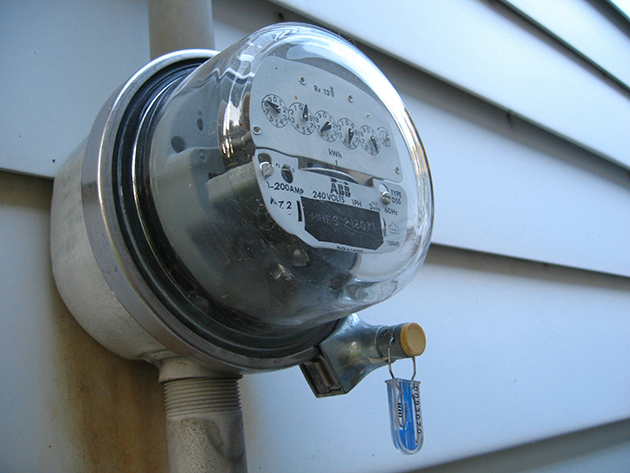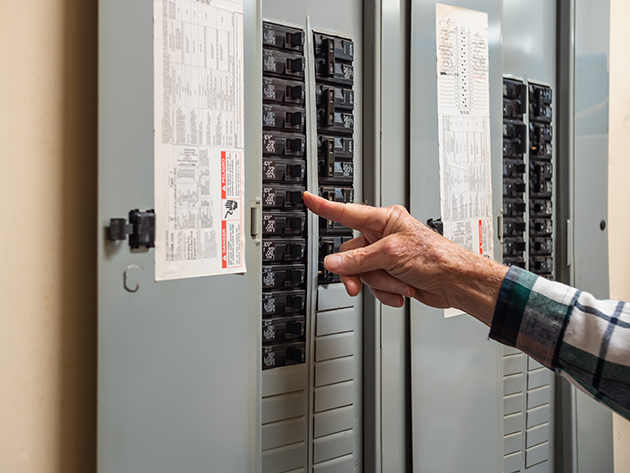Electricity is the backbone of modern home life. It powers everything from lights, heating, cooling, and a wide variety of devices and appliances around the home. Though we all rely on electricity in our everyday lives, many new homeowners might not know much about their electrical system and its key components. However, having a little bit of understanding about your new home can go a long way: giving you the confidence and know-how to keep your home in top shape and handle minor issues with ease.
It’s important to note that some components can be potentially dangerous if not approached and handled appropriately when dealing with the electrical system. It’s best to air on the side of caution when dealing with the electrical system and contact an electrical professional if you come across something you are unsure about. Homeowners need to understand your home and its systems, but be sure to consider the limits of your knowledge and know when to contact the appropriate expert.
To start, let’s review some of the main components of the electrical system and what their function is:
Service Connection and Meter
Your home will receive electricity from your local provider through the Electric Meter. The powerlines from the utility company connect to your service conduit, which brings power to the electric meter, and in turn, into your home to use across different devices and appliances. The meter measures how much electricity your home uses, and the utility company uses this to determine your electrical bill.

Main Service Panel
After coming through the meter, the electricity feeds into the main service panel, sometimes referred to as the breaker box. The service panel is the main distribution point of the electricity to the different circuits around your home. From here, you can shut off or turn on your home’s electricity or control specific circuits.

Circuit Breakers (Main and Branch)
Behind the panel door, you will find all the various breakers for the different areas of your home. Often at the top of the panel, you will find the main breaker that can turn on or off the entire electrical, and underneath you will have all the branch breakers that control a specific circuit within the house. It’s a good practice to keep breakers appropriately labeled so that you can easily turn off or on particular circuits off quickly.
Outlets
Outlet, or receptacles, allow you to plug in various devices and appliances to power them. Lighting, refrigerators, computers, televisions, and kitchen appliances are just some examples of things that you will be plugging into your outlets. Standard outlets found in most homes across the country often come as 15-amp or 20-amp. 20-amps outlets allow for more electricity without tripping the breaker, and you may have some unique outlets that provide 30-amp or 50-amp in your home. However, these are typically installed for larger appliances such as clothes washing machines. In the wet areas of the house, like the bathroom or laundry room, the outlets should have some GFCI (ground-fault circuit-interrupter) to prevent electrocution.

The Electrical System and Your Home Inspection
During the home inspection, your inspector will test the various components and investigate any issues they come across. First and foremost, given the dangers that come with electricity, your inspector will make sure that your electrical system does not pose any added risk or harmful situations that could lead to harm to your family or home. To do this, the inspector tests the outlets for correct wiring, open the electrical panel to verify correct circuity as well, check for any breakers running too “hot,” look out for outdated complements, old wiring, or missing protections such as the GFCIs. The inspectors will compile all their findings for you in their inspection report. They may recommend further consultation with a licensed electrical professional for more analysis that may call for repairs to your electrical system.
Common Issues
The age of your home impacts many of the issues associated with the electrical system. Older homes often have outdated wiring such as knob and tube wiring or aluminum wiring, which do not provide the same protection as other modern forms of wiring. Outdated wiring poses an additional risk of overheating and wearing out other components quicker across the electrical system. Other safety concerns are three-pronged, ungrounded outlets that prevent shocks or lack GFCIs protection in rooms that often have a lot of moisture.
Remedying some of these issues can be relatively cheap. For example, replacing an old outlet with a GFCI outlet may run you around $50 per outlet, depending on your area. However, if you need to rewire large parts of your electrical system due to outdated wiring, the cost can be upwards of $10,000.
Wrapping Up
Unlike a leaky pipe or missing shingles, it’s hard to perceive your electrical system and its issues as the average homeowner. During your home inspection, you can gather the most information about your potential home’s electrical system and be sure to use your home inspector as a knowledgeable resource during this time. As we have covered, the electrical system can quickly become dangerous if it is not working correctly, so it’s essential to make sure everything is in working order when you move into your new home.



